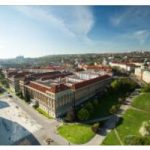Republic of the Congo: population, cities
Population
Population
According to Countryaah website, approximately 5.5 million people live in the Republic of the Congo. With just 11 residents per km², the population density is very low. 1/4 of the country’s people live in the capital Brazzaville alone.
Ethnic composition
The population of the Republic of the Congo consists of 98% Bantu groups (48% Congo, 20% Sangha, 17% Téké, 12% M’Bochi) and 2% of minorities of pygmies, Ubangi groups and a few Europeans.
Religious
affiliation About 60% of the residents of the Republic of the Congo are Catholic, 10% are Protestants, 10% are Muslims and 20% are followers of natural religions (animists).
National language
The official language in the Republic of the Congo is French. Lingala is the colloquial language for around 50% of the country’s population.
In addition to Lingala, which is mainly spoken in the north of the country, Kituba, which is widespread in the south, has also been included in the Congolese constitution as the lingua franca. Monokutuba, Kikongo, Téké, Sangha and Ubangi languages are also used.
Capital and other cities
Brazzaville
The capital of the Republic of the Congo is located in the southeast of the country, only separated from Kinshasa by the Congo River. The city, known for its numerous colorful markets, presents itself as a varied and exciting experience. About 1.3 million people live in the shadow of the 106 meter high Tour Nabemba, the undisputed landmark of the city. The important traffic junction Brazzaville offers its visitors not only the everyday Congolese chaos but also a short journey through time into the colonial history of the country, which can be read in buildings such as the Basilica Sainte Anne, the temple mosque and the Cathédrale de Sacré Coeur. As an excursion option, one should consider the rapids of the Congo, which bubble south of Brazzaville. According to Abbreviation Finder, ROC stands for Republic of the Congo in English. Click to see other meanings of this 3-letter acronym.
Loubomo (formerly Dolisie)
About 110,000 people live in Loubomo, formerly Dolisie. This city in the south of the country was once founded as a stop on the Congo-Océan railway line, which runs from Point-Noire to Brazzaville. Today’s third largest city in the Republic of the Congo has meanwhile advanced to become an important railway junction.
Point Noire
If there is a tourist center in the Republic of the Congo, it is Point Noire. Sandy beaches, diverse entertainment options and the flair of an Atlantic city attract not only the affluent Congolese, but also visitors from all over the world. With more than 630,000 residents, the second largest city in the Republic of the Congo has the most important seaport in the country with the port, which was completed in 1939. He made Point Noire the economic metropolis of the republic.
Other large cities are:
Nkaya with around 47,000 residents
Ouesso with around 18,000 residents
Mossendjo with around 17,000 residents.
Republic of the Congo: geography, map
The Republic of the Congo covers an area of 342,000 km². Check topmbadirectory for politics, flags, famous people, animals and plants of Republic of the Congo. Thereof:
- ForestAround 57% of the country are tropical rainforests.
- Meadow and pasture landAround 30% of the land is used as meadow or pasture land.
- Fields and fieldsAround 0.5% of the land is used as arable land or fields, especially for growing palm oil, sugar, cocoa and coffee as well as cassava and plantains.
- Swamps and savannahLarger parts of the country are made up of swamps and savannah.
The Republic of the Congo shares a border with the following five states:
– Cabinda, an exclave of Angola, with a length of 201 km,
– Gabon with a length of 1,903 km,
– Cameroon with a length of 523 km,
– Democratic Republic of the Congo with a length of 2,410 km and
– Central African Republic with a length of 467 km.
The coast to the Atlantic has a length of around 170 km.
Longitude and latitude
The Republic of the Congo extends over the following geographical latitude (abbreviation Δφ) and geographical longitude (abbreviation Δλ):
| Δφ = from 03 ° 50´ north latitude to 05 ° south latitude. Δλ = from 011 ° to 018 ° 40´ east longitude |
You can find detailed information on this subject under Longitude and Latitude.
Time in the Republic of the Congo
For the Republic of the Congo, the following value applies to Central European Time (CET), i.e. the time (without summer time) in Germany, Austria and Switzerland. A minus sign means that it is earlier there, a plus sign that it is later than CET:
| Δ t (CET) = 0 h |
Further and detailed explanations of the time can be found under Time zones, time.
The highest point of the sun in Brazzaville in midsummer
Brazzaville, the capital of the Republic of the Congo, is located at a southern latitude of around φ = 04 °.
If the sun or its image point is above the city, i.e. at 04 ° south, the sun is vertically above the city. This happens exactly twice a year, roughly 15 days before March 21st and 15 days after September 21st (for details see position of the sun).
Mountains
The highest mountain in the country is the Monts de la Lékéti with a height of 1,040 m. Another slightly higher mountain is the Mont Berengou with 903 m height.
Rivers
The longest river in the country is the Congo with a total length of 4,835 km. Other rivers in the country are Oubangi and Sangha.
Lakes
There are no larger lakes in the Republic of the Congo.
The Atlantic
The Republic of the Congo borders the Atlantic Ocean in the south-west of the country with a length of around 170 km.









